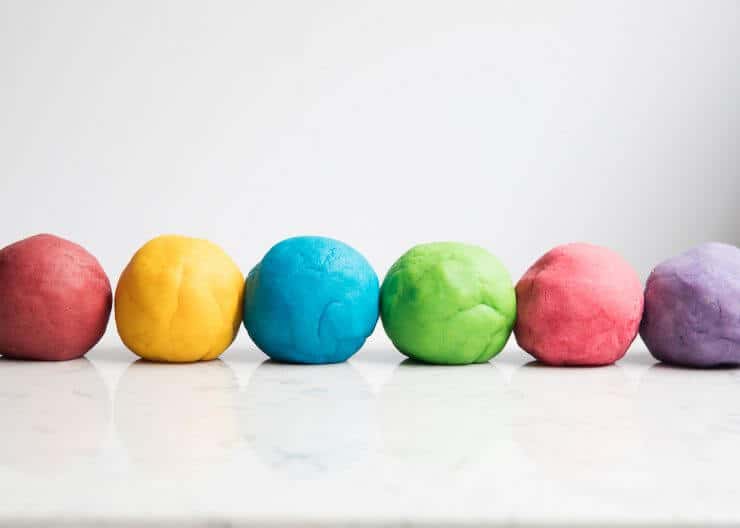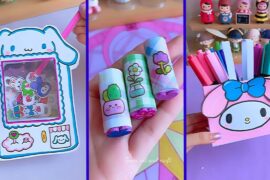Homemade Play Doh Recipes for Endless Fun with Your Little Ones
Welcome, creative parents and guardians, to your ultimate guide on whipping up the perfect batch of homemade play doh! If you’re looking for a fun, easy, and cost-effective way to keep your kiddos entertained, you’ve hit the jackpot. Not only is making play doh at home a delightful activity but it’s also a great opportunity for sensory play, which is essential for your child’s development. So, let’s dive in and get those little hands ready for some squishing, rolling, and sculpting!
Benefits of Homemade Play Doh
Before we roll up our sleeves and start mixing, let’s talk about why homemade play doh is such a fantastic choice for your family. Making play doh at home ensures you know exactly what’s going into it—no more worries about chemicals and allergens. It’s also an economical alternative to store-bought options, and the customization possibilities are endless. You can create a rainbow of colors, incorporate natural scents, and even make it edible for those little ones who are still exploring the world with their taste buds.
Your Homemade Play Doh Toolkit
Most of the ingredients for homemade play doh can be found right in your pantry, making this an accessible activity for any day of the week. Here’s what you’ll need to get started:
- Flour
- Salt
- Cream of tartar
- Vegetable oil
- Food coloring or natural dyes
- Warm water
- A large mixing bowl
- Spatula or wooden spoon
- Saucepan
- Measuring cups and spoons
Classic Play Doh Recipe
Let’s start with the basic play doh recipe that’s been used for generations. This timeless classic is non-toxic, soft, and lasts for a long time when stored correctly.
Ingredients:
- 2 cups of flour
- 1/2 cup of salt
- 2 tablespoons of cream of tartar
- 2 tablespoons of vegetable oil
- 1 1/2 cups warm water
- Food coloring (optional)
Instructions:
- In a large mixing bowl, combine the flour, salt, and cream of tartar.
- Add in the vegetable oil and warm water slowly. If you’re using food coloring, you can add it to the water before mixing.
- Mix all the ingredients until the dough begins to form. If it’s too sticky, add a bit more flour. If it’s too dry, add a bit more water.
- Place the mixture into a saucepan and cook over low heat. Stir constantly until the dough thickens and forms a ball.
- Once the dough has formed, remove it from the heat and let it cool on a piece of wax paper.
- Once cool, knead the dough until it’s smooth.
- Store your homemade play doh in an airtight container or a ziplock bag to keep it fresh.
Now that we’ve got the classic recipe down, the fun doesn’t have to stop there. There are numerous variations you can try—and we’re going to share some of the most exciting ones with you! From edible play doh recipes to aromatherapeutic batches that can calm your child after a bustling day of play, this guide will take you through it all.
Read on as we continue to explore more delightful play doh recipes that will provide hours of creative play for your little ones, and don’t worry, each recipe has been carefully designed to be safe, simple, and sure to inspire a burst of creativity in both you and your children.

5 Things Parents Should Know When Preparing Homemade Play Doh
As we embark on our play doh-making adventure, there are a few things that every parent should keep in mind to ensure a smooth, joyful experience. Here are five key tips:
- Keep It Non-Toxic: Always use food-grade ingredients whenever possible, especially if your little ones are prone to sampling their creations. This ensures their safety in case of accidental ingestion.
- Customize the Texture: The consistency of your play doh can easily be adjusted. If you find the dough too sticky, add more flour; if it’s too dry, add a touch more water or oil.
- Get Creative with Colors: You can use food coloring for vibrant colors, but for a more natural approach, consider using spices like turmeric for yellow or beet juice for pink. It’s a wonderful way to teach kids about colors and natural resources.
- A Pinch of Patience: If you’re cooking up the dough on the stove, be patient and keep the heat low. It might take a little longer, but this will prevent the dough from burning or cooking unevenly.
- Storage is Key: Proper storage is crucial for play doh longevity. An airtight container or a sealed bag will keep it from drying out. Some parents even find that refrigerating the dough can help it last longer.
These tips are just the beginning! Incorporate your own twists and tweaks to make each play doh experience unique. Remember, the process of making play doh can be just as fun as playing with it, so involve your kids in the preparation steps as well. Measuring ingredients and choosing colors are wonderful learning opportunities.
Natural Dye Alternatives for Safe and Colorful Play Doh
Concerned about artificial dyes in your homemade play doh? There’s no need to sacrifice color for safety. Here’s how you can use natural ingredients to create a bright spectrum of play doh that is just as appealing as its traditional counterparts.
- Use Berries: Crush blueberries for a lovely blue or raspberries for a delightful red.
- Vegetables Can Dye Too: Spinach juice lends a soft green, while carrot juice can dye your dough orange.
- Spices Aren’t Just for Cooking: Paprika can create a warm red-orange, and cocoa powder makes a rich brown.
Experimenting with natural colors not only adds a unique touch to your play doh but also offers an eco-friendly and allergy-safe alternative. Plus, it’s another educational aspect for your children, as they learn where colors can come from in nature.
Getting Creative with Play Doh Add-Ins
Once you master the basic recipes, don’t be afraid to shake things up with some fun add-ins. Sparkles, textured materials, and aromatic herbs can transform your play doh into an entirely new sensory experience. Here are some ideas:
- Sparkles: For a touch of magic, mix in some biodegradable glitter.
- Textures: Add rice, sand, or even small beads to create different sensory feelings.
- Scents: A few drops of child-safe essential oils can make your play doh smell amazing. Try lavender for a soothing effect or citrus for an energizing one.
Just remember, whatever you mix in should be safe for kids and easy to clean up. Always supervise playtime, especially with younger children, to ensure a safe and happy playing environment.
The possibilities are endless when you start creating homemade play doh with your children, and the beauty of it lies in the shared moments of joy and creativity. Dive in, get your hands dirty, and above all, have heaps of fun!
For more great articles please see here. For more information see here
Disclaimer
The articles available via our website provide general information only and we strongly urge readers to exercise caution and conduct their own thorough research and fact-checking. The information presented should not be taken as absolute truth, and, to the maximum extent permitted by law, we will not be held liable for any inaccuracies or errors in the content. It is essential for individuals to independently verify and validate the information before making any decisions or taking any actions based on the articles.




